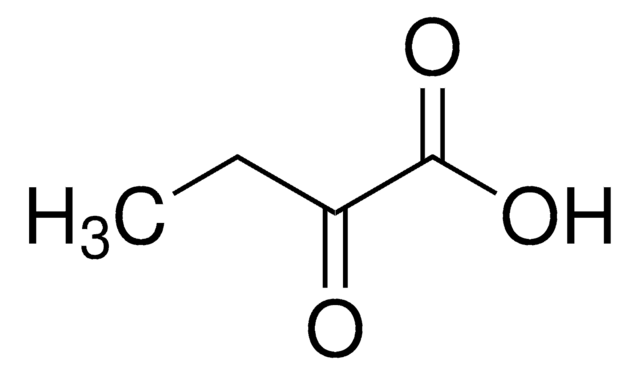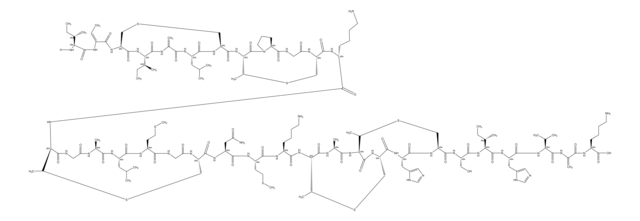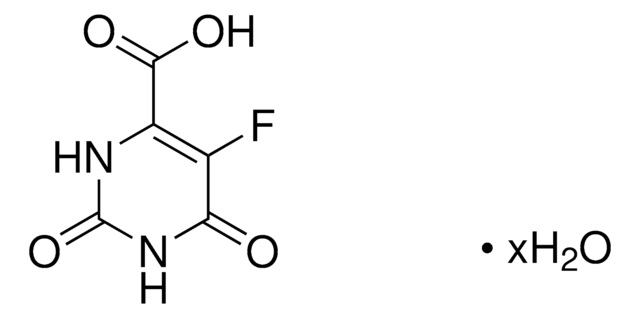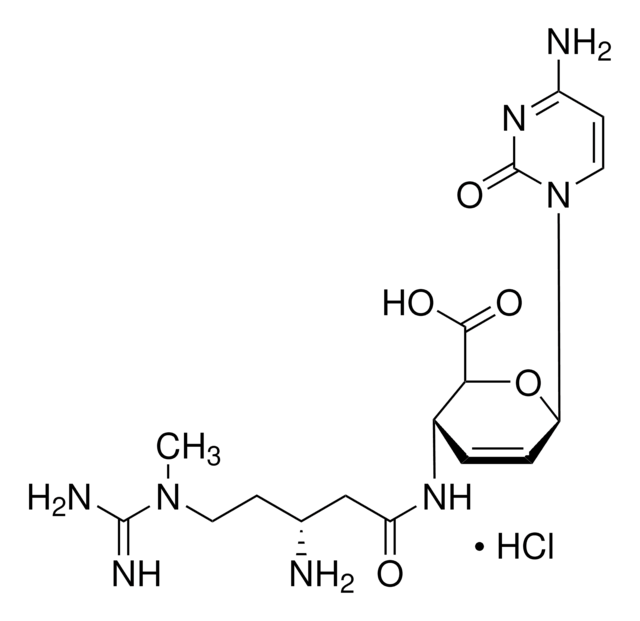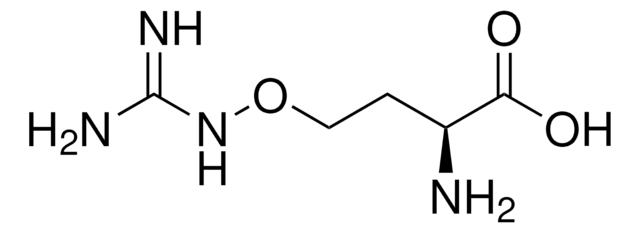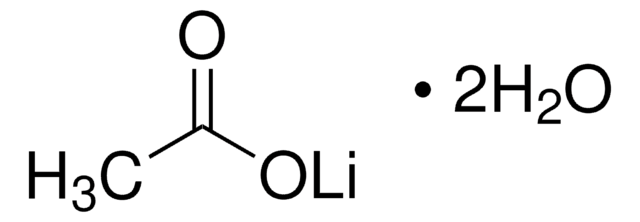About This Item
Produtos recomendados
fonte biológica
Streptomyces noursei
Nível de qualidade
Ensaio
≥85% (HPLC)
Formulário
solid
cor
white to light brown
solubilidade
H2O: soluble 200 mg/mL
adequação
suitable for (selection agent for molecular genetic research work)
espectro de atividade do antibiótico
Gram-negative bacteria
Gram-positive bacteria
fungi
mycobacteria
mycoplasma
parasites
viruses
yeast
Modo de ação
protein synthesis | interferes
temperatura de armazenamento
2-8°C
Categorias relacionadas
Descrição geral
Chemical structure: peptidyl nucleoside
Aplicação
Noursethricin is used as a dominant selection antibiotic for genetically modified bacteria, yeasts, fungi, protozoa and plants.
Ações bioquímicas/fisiológicas
Nourseothricin inhibits biosynthesis and induces miscoding. Resistance to nourseothricin is mediated by the sat1 encoded N-acetyltransferase. Nourseothricin is inactivated by acetylation of the β-amino group of the β-lysin.
Antifungal effective against Candida albicans. Candida species transformed with the gene encoding nourseothricin acetyltransferase (CaNAT1) were resistant to nourseothricin.
Embalagem
10mg, 100mg
Outras notas
Keep container tightly closed in a dry and well-ventilated place. Store under inert gas.
Palavra indicadora
Warning
Frases de perigo
Declarações de precaução
Classificações de perigo
Acute Tox. 4 Oral
Código de classe de armazenamento
13 - Non Combustible Solids
Classe de risco de água (WGK)
WGK 3
Ponto de fulgor (°F)
Not applicable
Ponto de fulgor (°C)
Not applicable
Equipamento de proteção individual
dust mask type N95 (US), Eyeshields, Gloves
Escolha uma das versões mais recentes:
Já possui este produto?
Encontre a documentação dos produtos que você adquiriu recentemente na biblioteca de documentos.
Os clientes também visualizaram
Adrian J Verster et al.
G3 (Bethesda, Md.), 7(10), 3337-3347 (2017-08-26)
Genes encoding essential components of core cellular processes are typically highly conserved across eukaryotes. However, a small proportion of essential genes are highly taxonomically restricted; there appear to be no similar genes outside the genomes of highly related species. What
Dorota Fennessy et al.
PloS one, 9(5), e97683-e97683 (2014-05-23)
Targeted alteration of the genome lies at the heart of the exploitation of S. pombe as a model system. The rate of analysis is often determined by the efficiency with which a target locus can be manipulated. For most loci
Kristin L Patrick et al.
Cell systems, 7(3), 323-338 (2018-08-06)
Intracellular bacterial pathogens secrete a repertoire of effector proteins into host cells that are required to hijack cellular pathways and cause disease. Despite decades of research, the molecular functions of most bacterial effectors remain unclear. To address this gap, we
Tomokazu Murakawa et al.
Cell reports, 26(2), 338-345 (2019-01-10)
Degradation of mitochondria by selective autophagy, termed mitophagy, contributes to the control of mitochondrial quality. Bcl2-L-13 is a mammalian homolog of Atg32, which is an essential mitophagy receptor in yeast. However, the molecular machinery involved in Bcl2-L-13-mediated mitophagy remains to
Markus Mund et al.
Cell, 174(4), 884-896 (2018-07-31)
Clathrin-mediated endocytosis is an essential cellular function in all eukaryotes that is driven by a self-assembled macromolecular machine of over 50 different proteins in tens to hundreds of copies. How these proteins are organized to produce endocytic vesicles with high precision
Nossa equipe de cientistas tem experiência em todas as áreas de pesquisa, incluindo Life Sciences, ciência de materiais, síntese química, cromatografia, química analítica e muitas outras.
Entre em contato com a assistência técnica





